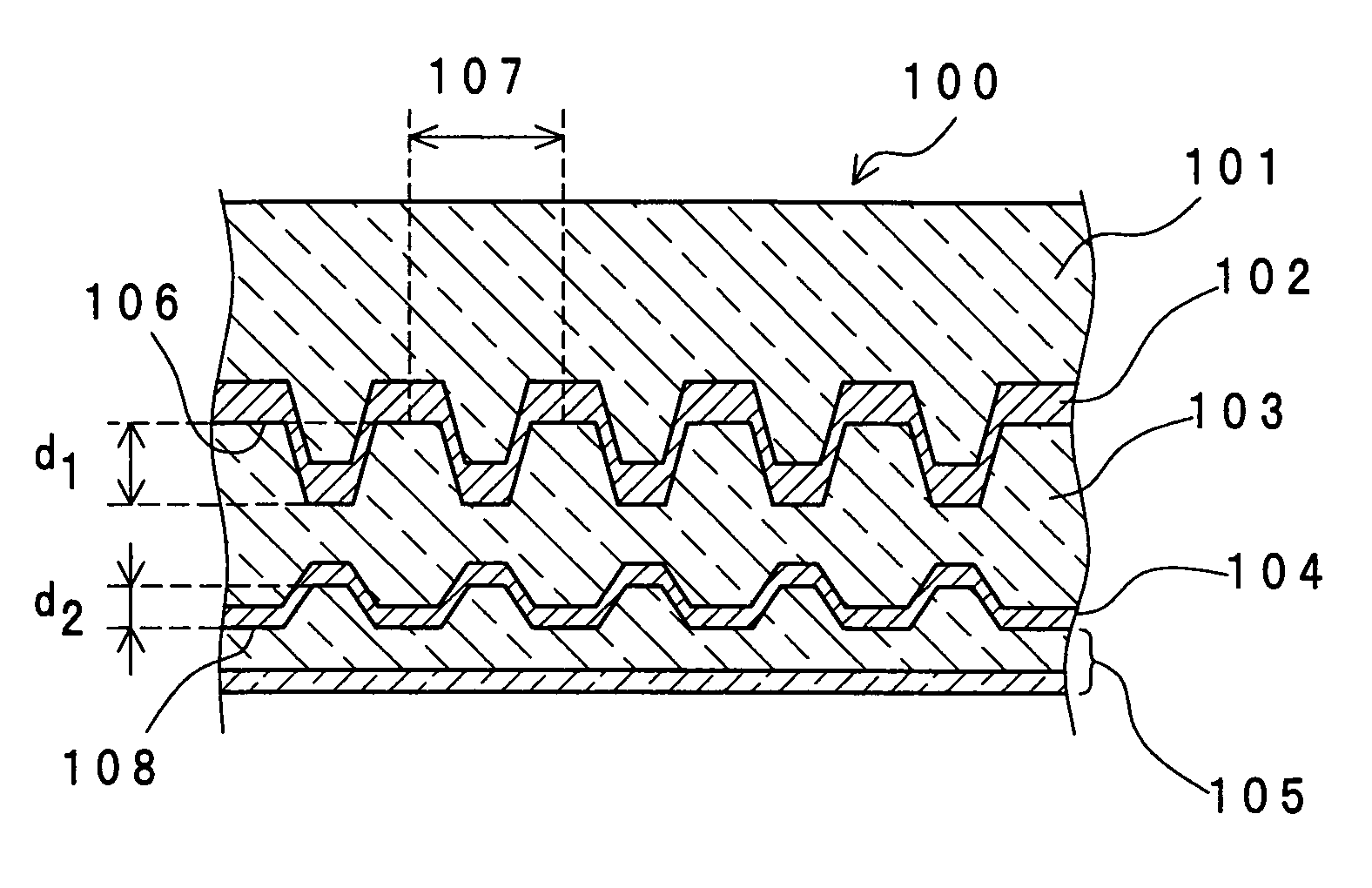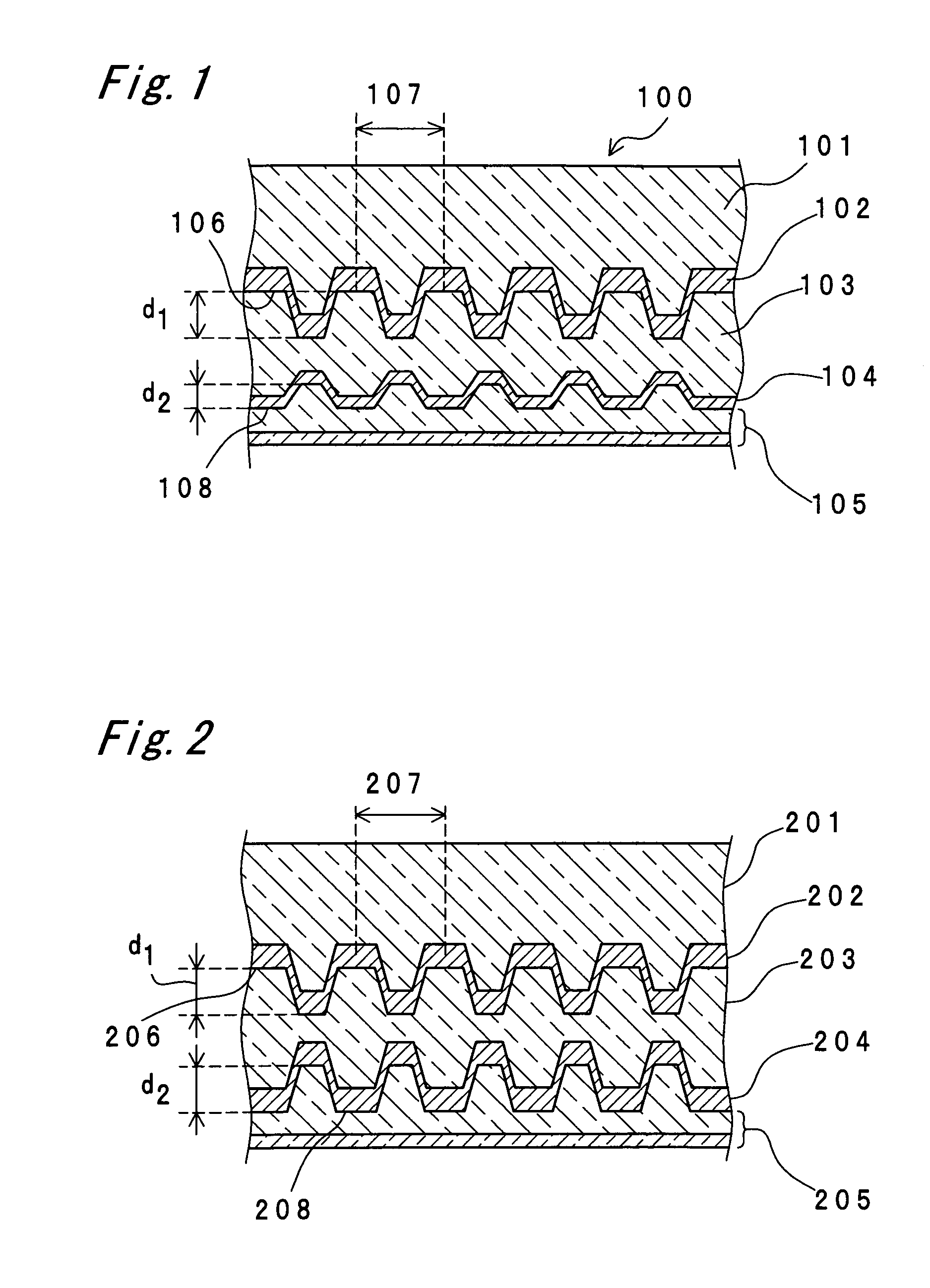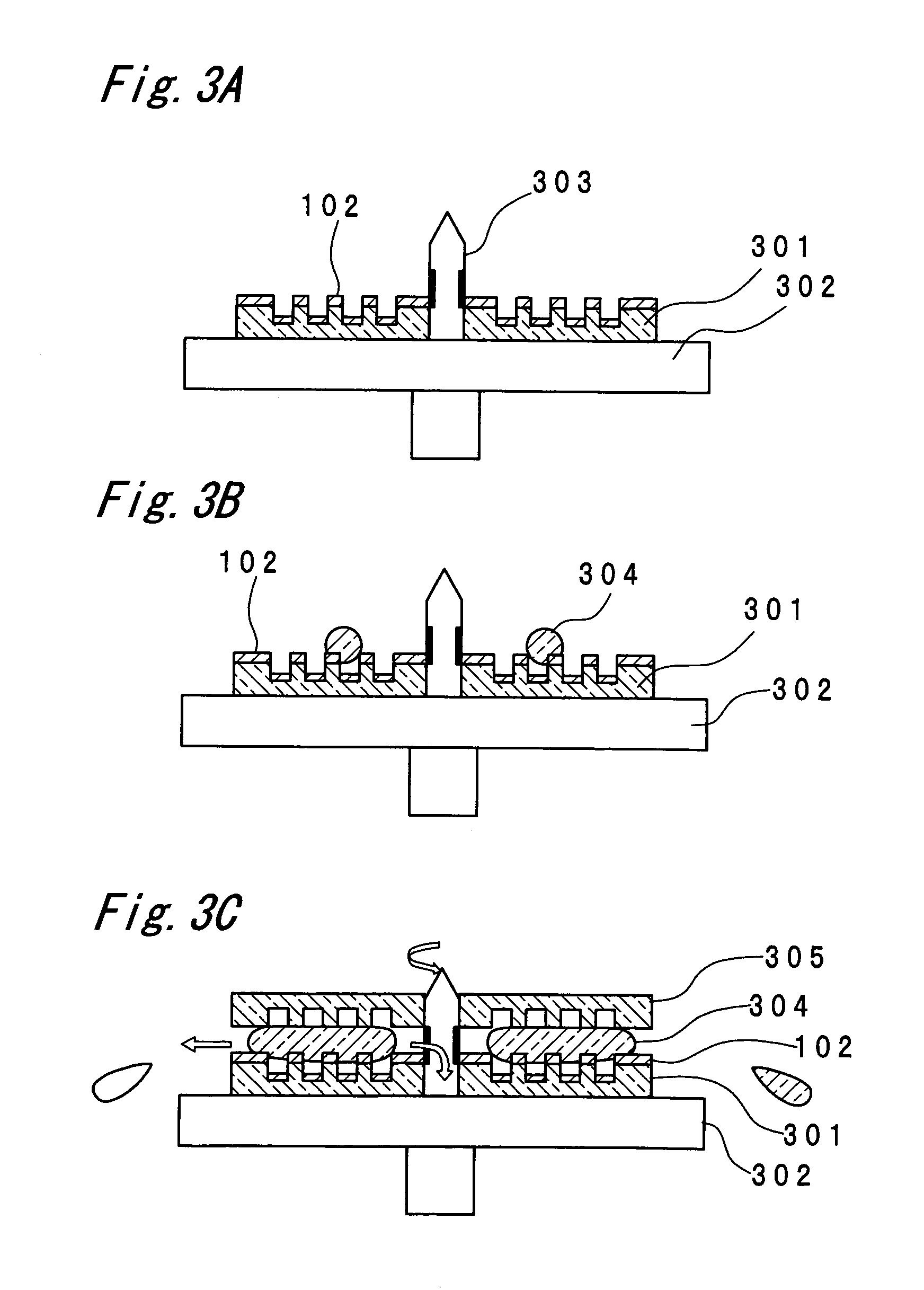Optical recording medium and process for producing the same
a technology of optical recording medium and optical recording medium, which is applied in the field of optical recording medium, can solve the problems of not being able to obtain good signal quality, not being able to carry out tracking control, and not being able to receive adverse effects
- Summary
- Abstract
- Description
- Claims
- Application Information
AI Technical Summary
Benefits of technology
Problems solved by technology
Method used
Image
Examples
embodiment 1
[0069]The following description will discuss an optical recording medium and manufacturing method thereof in accordance with first embodiment of the present invention. With respect to the signal reproducing system of this optical recording medium 100, a reproducing head having a semiconductor laser wavelength of 400 nm with NA of 0.85 is used. Moreover, the following description discusses a case in which: the track pitch TP of signals formed on the first signal layer and the second signal layer of the optical recording medium is 0.32 μm and the pit length of a 2T signal that forms the shortest pit upon adopting a 1-7 modulation system as the signal modulation system is 0.149 μm.
[0070]FIG. 1 is a cross-sectional view that shows an optical disk in accordance with embodiment 1 of the present invention. This optical disk 100 has a structure in which a first substrate 101, a first reflective layer 102, a second substrate 103, a second reflective layer 104 and a cover layer 105 are succes...
embodiment 2
[0117]FIG. 10 is a cross-sectional view that shows a cross-sectional structure of an optical disk 100b in accordance with embodiment 2. In comparison with the optical disk in accordance with embodiment 1, this optical recording medium 100b is different in that only one signal face for recording signals is prepared. This optical disk 100b is provided with a substrate 101 that has convex-shaped pits on one of the faces, a reflective layer 102 that is formed on the convex-shaped pits of the first substrate 101 in a manner so as to reflect the recesses and lands, and a cover layer 105 that is formed on the reflective layer 102. A signal face 106 made of convex-shaped pits is formed on the reflective layer 102.
[0118]In the optical disk 100b, with respect to a pit depth d that corresponds to a difference between the recesses and lands of the reflective layer 102, the wavelength λ of signal-reproducing laser light and the refractive index n of the cover layer 105, the following relational ...
embodiment 3
[0119]FIG. 11 is a cross-sectional view that shows a cross-sectional structure of an optical disk 100c in accordance with third embodiment. In comparison with the optical disk in accordance with embodiment 1, this optical disk 100c is different in that three layers of signal faces for recording signals are prepared. This optical disk 100c is provided with a first substrate 101, a first reflective layer 102, a second substrate 103, a second reflective layer 104, a third substrate 111, a third reflective layer 112 and a cover layer 105 that are successively laminated in this order. The first substrate 101 has convex-shaped first pits on one of the faces. The first reflective layer 102 is formed on the concave-shaped first pits of the first substrate 101 in a manner so as to reflect the recesses and lands. This first reflective layer 102 has a first signal face 106 made of concave-shaped pits. The second substrate 103, which is formed on the first reflective layer 102, has second conve...
PUM
| Property | Measurement | Unit |
|---|---|---|
| thickness | aaaaa | aaaaa |
| total thickness | aaaaa | aaaaa |
| depth | aaaaa | aaaaa |
Abstract
Description
Claims
Application Information
 Login to View More
Login to View More - R&D
- Intellectual Property
- Life Sciences
- Materials
- Tech Scout
- Unparalleled Data Quality
- Higher Quality Content
- 60% Fewer Hallucinations
Browse by: Latest US Patents, China's latest patents, Technical Efficacy Thesaurus, Application Domain, Technology Topic, Popular Technical Reports.
© 2025 PatSnap. All rights reserved.Legal|Privacy policy|Modern Slavery Act Transparency Statement|Sitemap|About US| Contact US: help@patsnap.com



